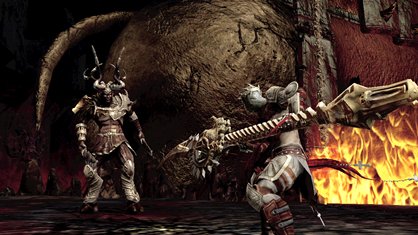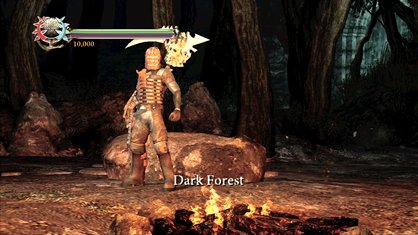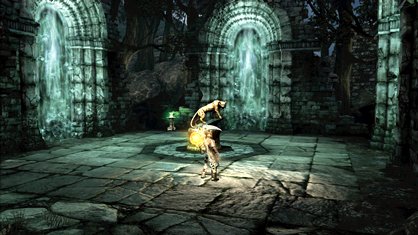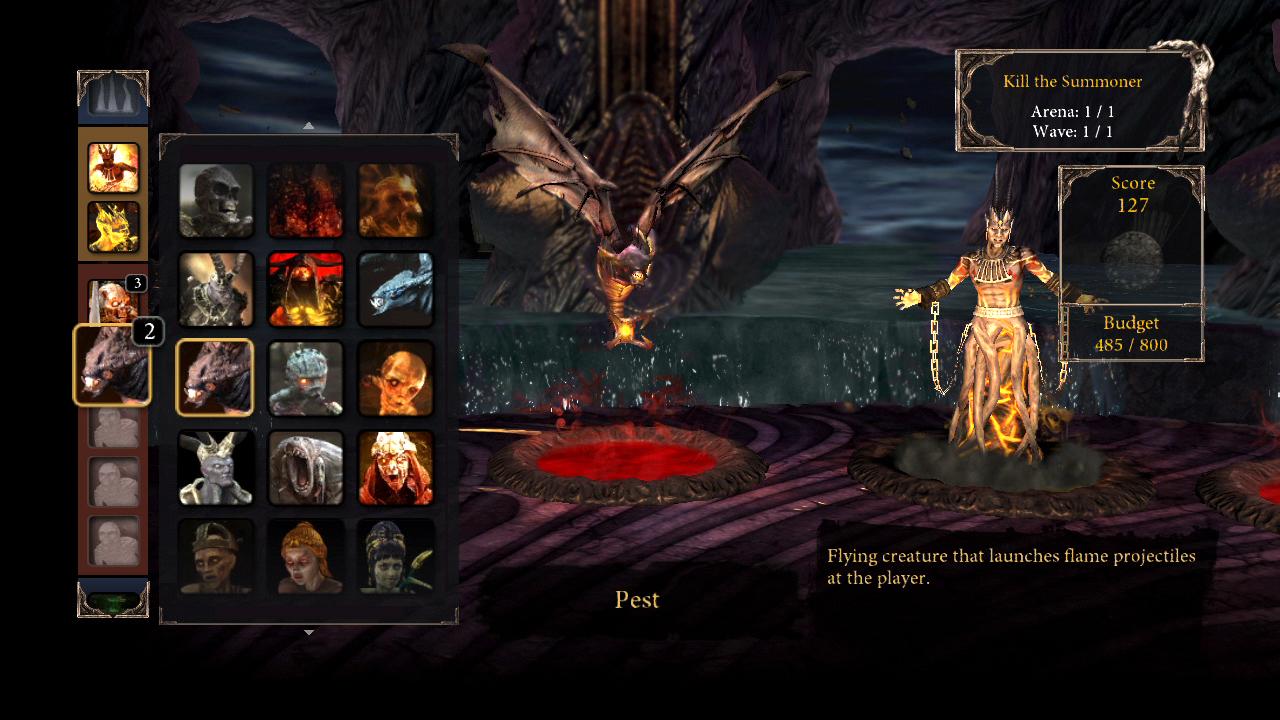Why you can trust GamesRadar+
Maddeningly there are often glimpses of interesting goings-on in the distance or at the corner of the screen, but because the camera’s locked to rails the best sights seem hidden from you. The City of Dis’ introduction is a phenomenal blend of art direction and calmness that’s never repeated, and a set-piece which suggests the game will stop dragging its feet and gather some momentum. But when you enter through the city’s gates you’re forced to suffer the most boring rendition of Gears of War 2’s closing Brumak ride. Yes, Dante’s Inferno has its unfair share of dragging animalistic ‘vehicle’ sections. And with the camera locked to the turd-brown road in front, despite the endless expanse of magnificent red flame and lava just above the eye-line, you don’t even get the chance to appreciate the view.

When you finally do come across an area of note, the game rarely delivers. The Wheel of Fortune turns out to be nothing more than a plain slab of stone on top of which you fight a boss. Similarly disappointing is Geyron’s back, which just turns out to be a plain elevator (with, you’ve guessed it, respawning enemies on top).
These problems are only amplified by the moments where the inspiration shines through. Gluttony is a conceptual triumph, built entirely out of giant tongue bridges, mouth gates and digestive organs. Charon’s Ferry is another exceptional moment: the normal ferryman and his boat traded for a hulking beast. Characters, too, often show sparks of creative genius. Human faces are problematic, but most enemy types are as twisted as a tornado. It wouldn’t make a difference to the game’s final score, but we’d love to pore over the concept art design documents.

Above: Yup, you can dress as Isaaac from Dead Space
It would be easy to get bogged down in the swampy mire that is Dante’s Inferno’s wealth of problems for quite a few more pages, yet it’s worth celebrating what Visceral Games’ latest gorefest does right: copying God of War. Dante’s Inferno isn’t just a 3D action game with uncanny similarities to God of War. It’s a clone, to the point where we’re stunned Sony’s lawyers haven’t been called in for a chat. Instead of Greek gods and crumbling ruins we’ve got sinners and circles of Hell, but the colour of the coating is irrelevant when the cake underneath is the same.
Of course, our fairytale doesn’t quite end there. While Dante’s poem is the perfect set-up for the title (iconic location, memorable beasties, nine clear-cut levels and a fight with Lucifer to round it all off – the game practically designed itself) the execution sits far closer to the ‘good’ marker than it does the ‘great’.

Enemy archetypes can be split into three major categories: grunts, heavies and bosses. The first is the fodder. Unbaptized babies, zombie-esque warriors… they’ll nip and scratch but Dante can dispose of them with ease. The heavies take a little more punishment (actually, a lot more later on), and include a couple of scrotum-wrenchingly tough foes you’ll be happy to see the entrails of.
More info
| Genre | Action |
| Description | God of War is a mighty tough act to emulate and Inferno clearly isn’t in the same league, but though this copycat is flawed it’s a guilty pleasure for those who can’t wait for the real thing. |
| Platform | "Xbox 360","PS3","PSP" |
| US censor rating | "Mature","Mature","Mature" |
| UK censor rating | "18+","18+","18+" |
| Release date | 1 January 1970 (US), 1 January 1970 (UK) |




